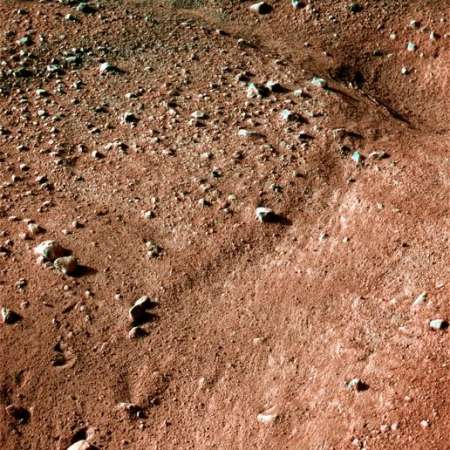
Polygons similar in appearance to surface patterns in Earth’s arctic regions are among the first features identified by NASA’s Phoenix mission, which touched down on Mars early yesterday morning at 0053 GMT.
The features imply that the landing area around Phoenix has permafrost, which is known to generate polygonal patterns on Earth by continual expansion and contraction. Although polygons had been spotted before from space, these ones seen at close range appear to be somewhat smaller — 1.5 to 2.5 m across — leading some NASA scientists to suggest that there is a hierarchy of “polygons within polygons”. As of yet, there have been no glimpses of surface ice.
Other images taken by Phoenix’s onboard cameras confirm that the spacecraft is in “good health”, having endured a nine-month, 679 million-mile journey and a tricky landing involving descent engines — the first time this type of landing has been performed successfully since 1976. NASA scientists are relieved that Phoenix did not suffer the fate of its two predecessors — the Mars Climate Orbiter and the Mars Polar Lander — which both failed in 1999.
Phoenix is now preparing to begin its three-month mission on Mars to investigate the origin of the ground ice, the operation of climate cycles and the possibility of microbial life.
• UPDATE 29/05/08: You can listen to a sound recording of Phoenix’s landing here.



